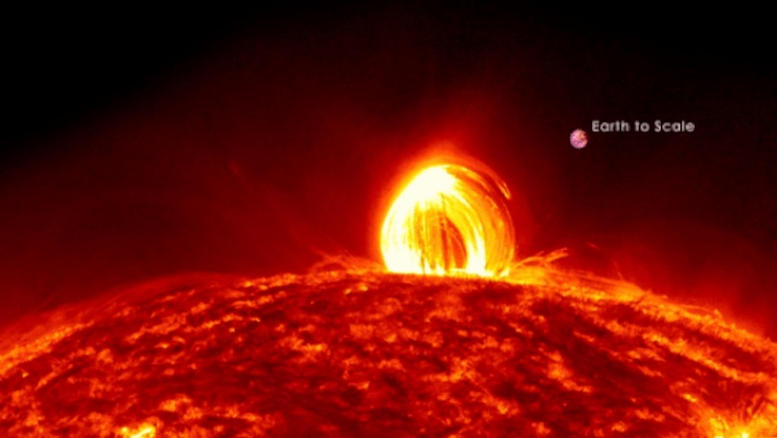Intense solar flares, including larger “super flares” from other stars, are being studied to understand their impact and origins, with recent models indicating similar underlying physics and contributions from various star layers (Artist’s concept). Credit: SciTechDaily.com
The Sun generates solar flares that can affect Earth, with the most intense ones capable of causing blackouts and communication disruptions worldwide. However, these solar flares are relatively mild compared to the “super flares” seen by NASA’s Kepler and TESS missions. These “super flares” come from stars and are 100 to 10,000 times brighter than those on the Sun.
The physics are thought to be the same between solar flares and super flares: a sudden release of magnetic energy. Super-flaring stars have stronger magnetic fields and thus brighter flares but some show an unusual behavior—an initial, short lived brightness enhancement, followed by a secondary, longer-duration but less intense flare. A team led by University of Hawaiʻi Institute for Astronomy Postdoctoral Researcher Kai Yang and Associate Professor Xudong Sun developed a model to explain this phenomenon, which was published in The Astrophysical Journal.
“By applying what we’ve learned about the Sun to other, cooler stars, we were able to identify the physics driving these flares, even though we could never see them directly,” said Yang. “The changing brightness of these stars over time actually helped us ʻsee’ these flares that are really far too small to observe directly.”
Light curves
The visible light in these flares was thought to come only from the lower layers of a star’s atmosphere. Particles energized by magnetic reconnection, rain down from the hot, tenuous corona (outer layer of a star) and heat these layers. Recent work hypothesized that the emission from coronal loops—hot plasma trapped by the Sun’s magnetic field—may also be detectable for super-flaring stars, but the density in these loops would need to be extremely high. Unfortunately, astronomers had no way to test this, since there is no way to see these loops on stars besides our own Sun.

A image of a coronal loop on the Sun from the Solar Dynamics Observatory, showing the ʻcoronal rainʻ phenomenon. An image of the Earth is included to provide a scale for the loop, which is more than 10 times larger than Earth. Credit: NASA’s Solar Dynamics Observatory/Scientific Visualization Studio/Tom Bridgman
Other astronomers, using data from Kepler and TESS telescopes, spotted stars with a peculiar light curve—similar to a celestial “peak-bump,” a jump in brightness. It turns out, this light curve bears a resemblance to a solar phenomenon where a second, more gradual peak follows the initial burst.
“These light curves reminded us of a phenomenon we’ve seen on the Sun, called solar late-phase flares,” said Sun.
Producing similar late-phase brightness
Researchers asked, “Could the same process—energized, large stellar loops—produce similar late-phase brightness enhancements in visible light?”
Yang tackled this question by adapting fluid simulations that had been frequently used to simulate solar flare loops, and scaling up the loop length and magnetic energy. He found that the large flare energy input pumps significant mass into the loops—resulting in dense, bright, visible-light emission, just as predicted.
These studies revealed that we only see such “bump” flaring light when the super-hot gas cools down at the highest part of the loop. Because of gravity, this glowing material then falls, creating what we call “coronal rain,” which we often see on the Sun. This gives the team confidence that the model must be realistic.
Reference: “A Possible Mechanism for the “Late Phase” in Stellar White-light Flares” by Kai E. Yang, Xudong Sun, Graham S. Kerr and Hugh S. Hudson, 6 December 2023, The Astrophysical Journal.
DOI: 10.3847/1538-4357/ad077d





